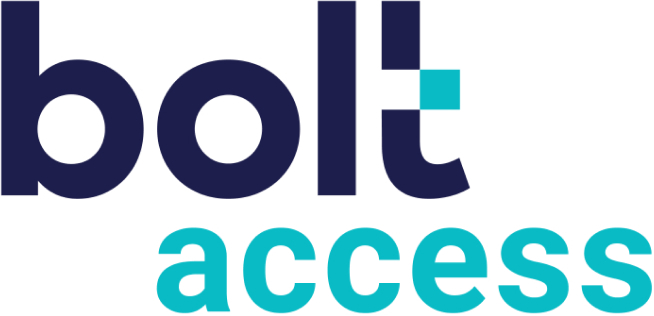
"When independent agents think of property and casualty insurance coverage, the first things that spring to mind are standard personal property and belongings. Indeed, as insurance provider The Zebra notes, the most common policies are homeowners, renters and car insurance. However, P&C insurance can also include more high-end coverage on some extremely valuable and expensive items. Yachts, which fall under inland marine or ocean marine property insurance, are one example, and personal aircraft, which fall under aviation insurance, are another, writes the team at Kaplan Financial Education. While this coverage isn’t likely to be on the radar of your average person, it certainly can be if you’re catering to high-end P&C customers. In this case, you’ll want to know what they’re looking for in terms of insuring and protecting their yachts or personal planes and how to keep them satisfied. Here are some specific things that this type of customer tends to want.
An Agent Who Truly Understands Their Needs
First, you should have a thorough understanding of the watercraft/aircraft and the lifestyle that comes along with it. “Personal marine is one of various insurance areas — including motorcycles and classic cars — where clients expect professionals to be as well-versed as they are,” corporate vice president and director of personal insurance for Burns & Wilcox, Bill Gatewood says. “They want somebody who can speak the language and understands the lifestyle.” Take the time to fully familiarize yourself with the financial side of yacht and personal plane ownership. Having a deep knowledge of what ownership entails and of the mindset of this demographic should make it easier to connect and build strong relationships.
Comprehensive Policies
Luxury yachts are enormous investments. Worth Avenue Yachts reports that the cost of a second-hand yacht was $8.4 million in 2014. So it only makes sense that owners want robust coverage that will protect them in a variety of circumstances. According to Investopedia, there are two components of yacht insurance. First, there’s hull insurance (also known as agreed value coverage), which pertains to the body of the boat where all parties agree that the value of the yacht will be paid in a total loss. If something catastrophic was to happen where there was irreparable damage, this would cover the insured’s losses. The second part covers replacements costs. These are payouts for partial losses, excluding things like sails, outboards, batteries, and so on, which naturally depreciate over time. However, P&C insurance company Chubb says that there are several other types of coverage that yacht owners may be interested in as well. Some of these include:
- Liability protection. This covers things like legal defense costs and wreck removal.
- Medical payments. If someone is injured onboard, this will cover certain medical expenses.
- Marine environmental damage coverage. Owners can potentially receive fines and penalties for damaging marine life. This pays a portion of those costs.
- Emergency towing and assistance.
- Temporary substitute watercraft. Owners receive a temporary watercraft during the time their primary yacht is being repaired.
When it comes to private jets, prices vary significantly depending on factors like age, size and features. In its listings, Air Charter Service has personal planes that, at the low end, cost around $300,000, but also shows models that are in the multi-millions. As with yachts, hull and liability insurance is a central part of insuring a personal plane, writes risk advisory firm The Horton Group. This basic coverage protects the insured against physical loss or damages which includes loss of cargo, and includes medical coverage as well as third-party liability. Beyond that, there’s a variety of added protection options such as:
- Emergency expense reimbursement.
- Trip interruption expense coverage.
- Spare engines and parts coverage.
- Baggage coverage.
It’s safe to say that price isn’t a huge issue for most high-end P&C customers. What they’re interested in is finding all-encompassing coverage that gives them peace of mind.
Customized Coverage
Unlike insuring a car with fairly standard dimensions and features, yachts can be vastly different from one another, as can are personal planes. Therefore, you can’t treat the process of insuring them in the same manner. It’s all about providing highly customized coverage. In order to do that, you need to ask the right questions, Jacquelyn Connelly at Independent Agent Magazine writes. For instance, you need to know where a yacht owner is keeping the boat when it’s not in use. A yacht stored at a marina is at greater risk than one stored at the owner’s home. You should also ask about their experience. A customer with a lot of experience with large vessels like yachts would likely face less risk than someone who’s just starting out. Similarly, if the private plane owner flies his own craft instead of hiring a pilot, the insurance needs will change. Your goal as an independent agent is to determine what a customer’s specific needs are based on various factors like these. As the picture becomes clearer, you can suggest customized coverage perfectly tailored to each customer’s unique situation.
Transparency
Insurance is complex. It’s easy for people to become frustrated with the jargon, intricacies and fine print of policies. On top of that, payout details are often murky, and insureds aren’t 100 percent clear on what they’ll receive in the event of a claim. This ambiguity can drive a wedge between independent agents and high-end P&C customers, creating friction to the point where would-be buyers are reluctant to make a purchase. That’s why creating transparency should be one of your main objectives. The team at Insurance & Risk Professional explains that policy information should be presented clearly, succinctly and concisely so that customers are able to easily understand it and compare it with other policies. That way they can make the right decision and obtain property insurance that’s agreeable to them on their terms. Fraud, risk and compliance company, FRISS also mentions that the payout details of claims need to be made clear as well. They say that it’s impossible to earn the trust of customers when there’s a lack of transparency about what percentage of claims are paid or how much the payouts are. If there’s any room for confusion, you’ll want to take measures to eliminate or at least reduce it. For instance, a chart featuring a side-by-side comparison of different marine insurance policies along with their pros and cons may work. Insurance marketing strategist Troy Wilson says providing a strong narrative can also work. Use a hypothetical situation to tell a story so customers can better understand the process.
Hassle-Free Claims
Filing a claim can be a time of great stress for people, management consultant Henrik Naujoks writes. This is especially true when it comes to individuals who have hundreds of thousands or even millions of dollars invested in their personal property. The events in and around an insurance claim along with the claim itself can create an immense amount of anxiety on a person, adds the Insurance Advisernet team. And the last thing they want is to be burdened with is additional problems stemming from a complex claim. During this vulnerable and chaotic time, they expect their agent to reduce their anxiety and not increase it. To get to this point starts with educating insureds on how they can simplify the claims process themselves. This means having them collect as much information as possible, recording the details for later reference and contacting you as soon as they can, says Zach Randolph at Central Insurance Companies. On your end, you’ll want to be prompt with your follow-up and lend your expertise to help them through the difficult situation. Be compassionate. Be understanding. Be helpful. And most importantly, follow up. “Make sure you follow up with the client about the progress of their claim frequently,” says customer support expert Alexa Lemzy. “There’s nothing as frustrating as being left in the dark about the status of a claim.”
A Great Customer Experience
Owning a yacht or personal aircraft is by no means the norm. Personal finance reporter Jacob Passy points out that even most multimillionaires don’t have the funds to buy a private jet. Therefore, only a tiny percentage of your customers will be in need of marine or aviation insurance. Nonetheless, it’s certainly something you could encounter, especially if you cater to high-end clientele. That’s why it’s important to understand the mindset of this demographic and know precisely what they’re looking for with their P&C insurance. Images by: spotmatikphoto/©123RF.com, bst2012/©123RF.com, goodluz/©123RF.com"
Talk to an expert
Contact us
